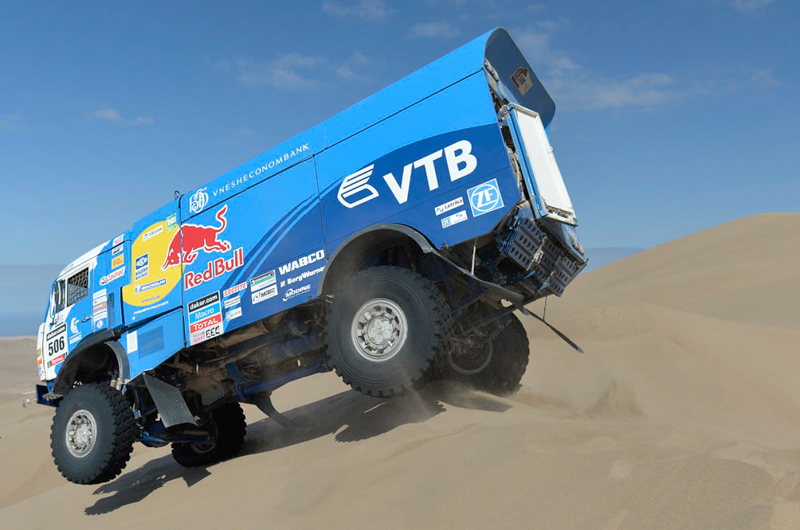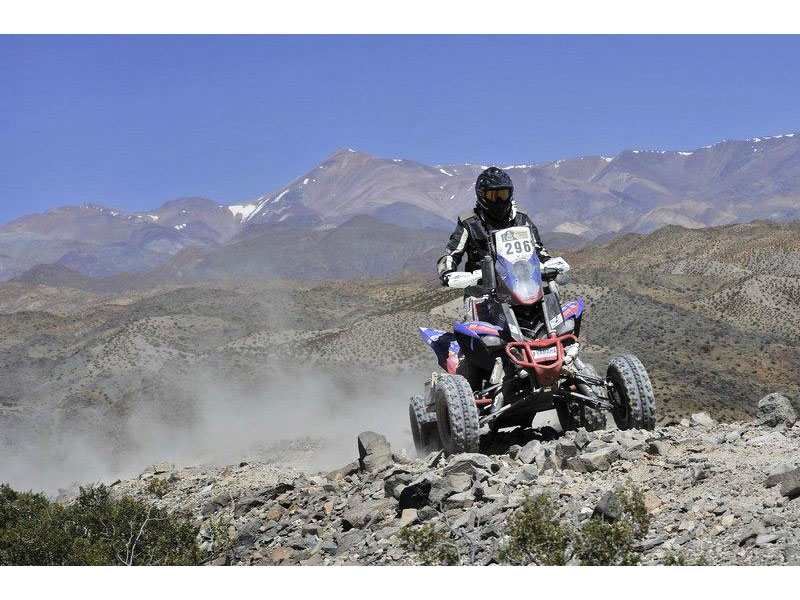Skis and mountains covered with snow. That’s not what they like. For certain car enthusiasts full of adventure the beginning of the year is always about desert and hot sands. In the first days of January caravans of those who came to conquer the endless sands set off for a two-week journey. Argentina, Bolivia, Chile. These countries hosted the marathon in 2014.
According to the majority of experts, the fifth stage became crucial for the race. It comprised the so-called “hors-piste” — 18-km long unmarked territory without any signs which could help the co-driver find his direction. This navigating puzzle helped to define the golden Bedouins.
In motorcycle class Marc Coma turned out to be the one with the best instincts. He was first to cross the finish line with more than an hour of advantage. None of his rivals even came close to him. Juan Roma was the best in car class to conquer the fifth stage. Eventually he was the one to secure the win in this category. But strictly speaking everyone recognised Nasser Al-Attiyah as the fastest driver of this Dakar event. However, one missed waypoint, one hour of penalty and 57 minutes of lagging behind Roma. Were it not for the penalty... All in all, it was more of a team victory. When Stéphane Peterhansel, Roma’s teammate, was too close, the team’s managers were “holding back” the French pilot. It even came to a point on the final stage when Peterhansel deliberately stopped and waited for Juan to roll first. As a result the entire X-raid team was on the podium but it still leaves a feeling of stolen intrigue and lack of sporting spirit.
The long-forgotten intrigues in trucks category came out more than ever. In the beginning of the marathon Gérard de Rooy hit the ground running. Marcel van Vliet (MAN) was considered to be his major rival. But after wondering in the desert, it turned out that de Rooy would be competing with our KAMAZ trucks. Ayrat Mardeev (the son of the famous Kamaz pilot Ilgizar Mardeev), one of the major hopes, “turned over” his truck on the very first day as the soil has fallen under its wheels. And though the team fixed the vehicle, navigation system broke down and technical commission did not let the truck back to the track. The puzzle of the 5th stage was best solved by Dmitri Sotnikov’s crew, which was supposed to be a rally support truck loaded with extra parts if their colleagues needed any assistance. But success achieved during the fifth stage changed the team’s plans. The major attention was given to the crew of Andrey Karginov, Sotnikov was watching his back and the car of Anton Shibalov became a support truck.
A combat between Karginov and de Rooy deserves an entire article. In short, Andrey managed to win back 32 minutes of a gap he had after the fifth stage by delivering desperate attacks and taking risks in almost every turn. Dakar has not seen a struggle like that for a long time already. As a rule, by the middle of the distance the gaps between the participants are so big that the situation can be changed only due to a breakdown or an unexpected crash. Finishing within a few minutes (!) of each other in a race which lasted for two weeks and covered thousands of kilometres is even more impressive than centiseconds in Formula 1.
Dakar rally rarely goes without miraculous rescues. This year the most dramatic accident happened to a two-time rally raid quad winner Marcos Patronelli. During the third stage the Argentine driver almost went off the cliff together with his quad. The vehicle could not stay on top of that cliff and crashed down. At the last moment Patronelli jumped off his quad. His Yamaha set off for a free flight with the driver’s water supply and GPS-navigator which could guide Patronelli away from the deserted cliffs. Luckily, other competitors were not far away and one of them gave a rescue sign. By the time the rescue team arrived, Marcos had already been suffering from dehydration.
But we will remember the quads not only due to accidents. It was the first time when Sergey Karyakin, “a regular guy from Ural”, took part in this category. Not only did he come seventh in quads division but also won one of Dakar's stages! It seems like tough guys from Ural together with masters from Tatarstan start an active attack on all Dakar’s frontlines.











